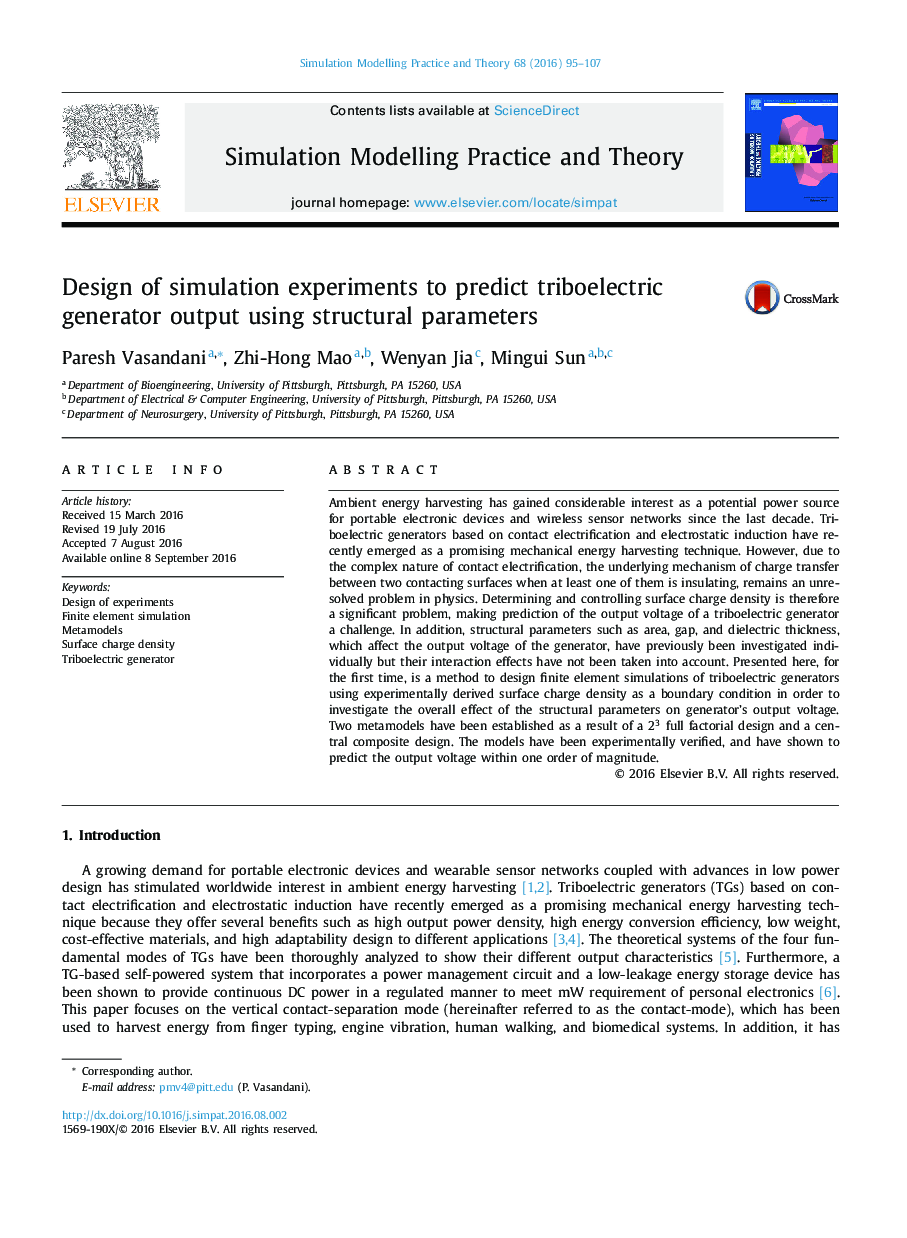| Article ID | Journal | Published Year | Pages | File Type |
|---|---|---|---|---|
| 6902803 | Simulation Modelling Practice and Theory | 2016 | 13 Pages |
Abstract
Ambient energy harvesting has gained considerable interest as a potential power source for portable electronic devices and wireless sensor networks since the last decade. Triboelectric generators based on contact electrification and electrostatic induction have recently emerged as a promising mechanical energy harvesting technique. However, due to the complex nature of contact electrification, the underlying mechanism of charge transfer between two contacting surfaces when at least one of them is insulating, remains an unresolved problem in physics. Determining and controlling surface charge density is therefore a significant problem, making prediction of the output voltage of a triboelectric generator a challenge. In addition, structural parameters such as area, gap, and dielectric thickness, which affect the output voltage of the generator, have previously been investigated individually but their interaction effects have not been taken into account. Presented here, for the first time, is a method to design finite element simulations of triboelectric generators using experimentally derived surface charge density as a boundary condition in order to investigate the overall effect of the structural parameters on generator's output voltage. Two metamodels have been established as a result of a 23 full factorial design and a central composite design. The models have been experimentally verified, and have shown to predict the output voltage within one order of magnitude.
Keywords
Related Topics
Physical Sciences and Engineering
Computer Science
Computer Science (General)
Authors
Paresh Vasandani, Mao Zhi-Hong, Jia Wenyan, Sun Mingui,
